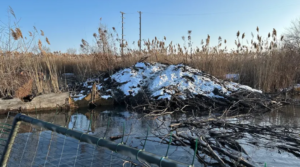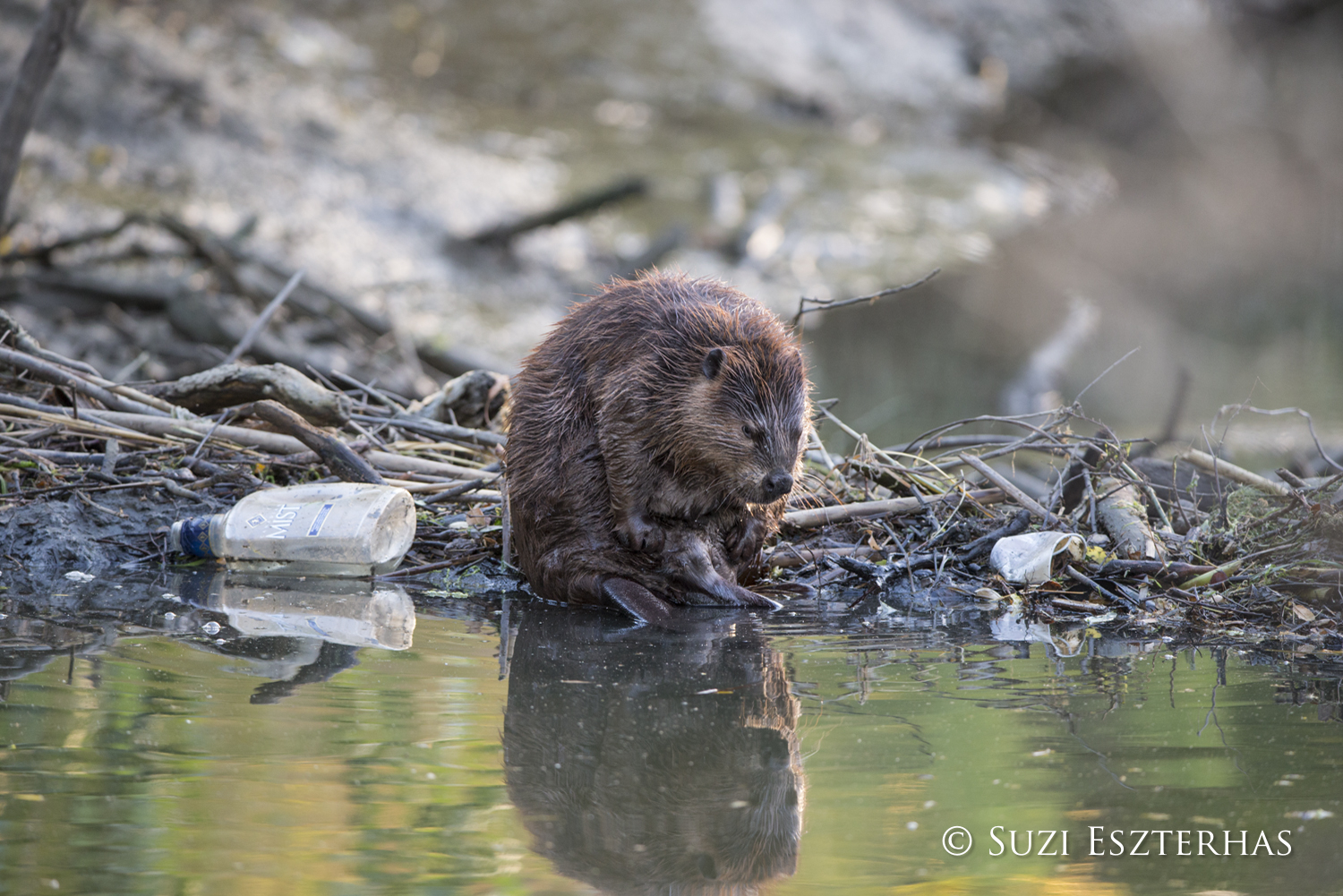It’s not just Chernobyl where beavers are reclaiming huge wastelands for their own and slowly making it habitable for other wildlife. They’re doing it in Detroit also.
Beavers reclaiming land on abandoned island in Detroit River
 Shoreline bushes chewed back. Nearby trees felled and demolished. Hundreds of branches piled near a mound damming up a river and flooding the area. To some people the scene looks like environmental havoc.
Shoreline bushes chewed back. Nearby trees felled and demolished. Hundreds of branches piled near a mound damming up a river and flooding the area. To some people the scene looks like environmental havoc.
To the beaver, it’s home.
Using trail cameras, FOX 2 photojournalist Coulter Stuart caught one of these rodents building his own den. It was spotted at an inlet on Stony Island in the Detroit River. In one scene, the beaver can be seen packing mud into the side of a mound – fortifications for his hut.
In another clip the beaver is seen walking on his hind legs, carrying sticks from one end ot the other.
Capturing this ingenuity on display can be tough since the rodents are nocturnal and only build at night. During the day, the only evidence are their footprints in the dirt and the discarded wood that surrounds their homes.
There’s evidence of another kind of activity on Stony Island, too. Scrap metal and sunken barges now shape the shoreline, while beer cans and shotgun shells litter the land. One dilapidated building has a message spray-painted on its side telling visitors the island smells like urine.
Yup trashy metal and a creek that smells like urine. That’s not so far off from the fine home our beavers once enjoyed. From the beaver perspective large chunks of metal aren’t that different from heavy wood and rock. They’ll do just fine to keep things anchored to the dam.
Once the home base for a massive project that transformed the Detroit River and Great Lakes shipping traffic, the 100-acre plot of land is slowly being reclaimed by wildlife.
“Wildlife is resilient. If you give it half a chance, you’d be surprised,” said Bob Burns who does conservation work with the Friends of the Detroit River group.
It may be a surprise that beavers have returned at all. They were harvested to near-extinction when fur trappers arrived from Europe during the colonial era. The added pressures of pollution and habitat loss from Southeast Michigan’s rapid growth in the early 20th century would have made any return to the area extremely difficult.
Burns is a longtime resident of Southeast Michigan. From the burning of the Rouge River in 1969 to the emergence of PFAS in the 2000s, he’s witnessed the impacts of human contamination on the environment.
But in the past 10 years, he’s also seen mother nature’s response when it’s offered an opportunity to recover. The reemergence of beavers is a sign of that progress.
“I’m not saying things are perfect, far from it,” he said. “But from the days of dumping oil and grease and having fires on the river to now with improvements in water quality – it’s really starting to pay off over the past decade.”
Mr Burns is my favorite kind of naturalist. One whose eyes and ears are fully opened to the here and now of wildlife. I really enjoyed this short video with clips of Ben and Dan Flores talking about what the landscape was and could be again.
We ruin a waterway so badly that no one wants to live anywhere near it. And then because its neglected and free of human threats beavers move in and start to improve things so it looks nice again. And then people move BACK because it they want their pretty river back and suddenly they want to get rid of the pesky rodents.
Of course you know how the story goes. First it’s WOW BEAVERS ARE BACK! and then its Ugh Beavers are back. Those rats ruining our culverts or eating our cherry trees.
Their population growth has also led to an increase in nuisance complaints related to beavers – though not to the point they’re management requires a larger response.
“It’s still not to the point that it’s a growing problem, but it’s a tight rope to walk,” Cooley said. “People like having beavers around. It’s a good indication you have good habitat. But there does come a point where they start backing things up. That’s in their nature.”
Beavers are now regular sight at the Bayview Yacht Club. They’ve also found suitable habitat at the Conner Creek Power Plant where the Rouge River opens into the Detroit River. The DNR keeps watch of them on Belle Isle while a few have prompted animal trapping calls on Grosse Ile.
Recently, they surprised residents in Trenton at Ellias Cove.
The environment’s conservation will likely spur more interactions between humans and beavers as their numbers continue to grow. But Cooley says the beavers taking up residence on the islands that border Grosse Ile may not be such a bad thing.
“Being in the Detroit River, there’s not as many opportunities to cause problems. So that’s a good place for them to live,” he said. “If you build it, they will come.”
You know how it is, you have to strike a balance. Just like they did when they filled the river with ships bringing toxic supplies and then turned the entire boatway into a rusted dump. I guess that was a balance between pocketbooks. His and Theirs.
This new idea you’re suggesting, a balance between humans and nature, that sounds a little crazy to most people.







































